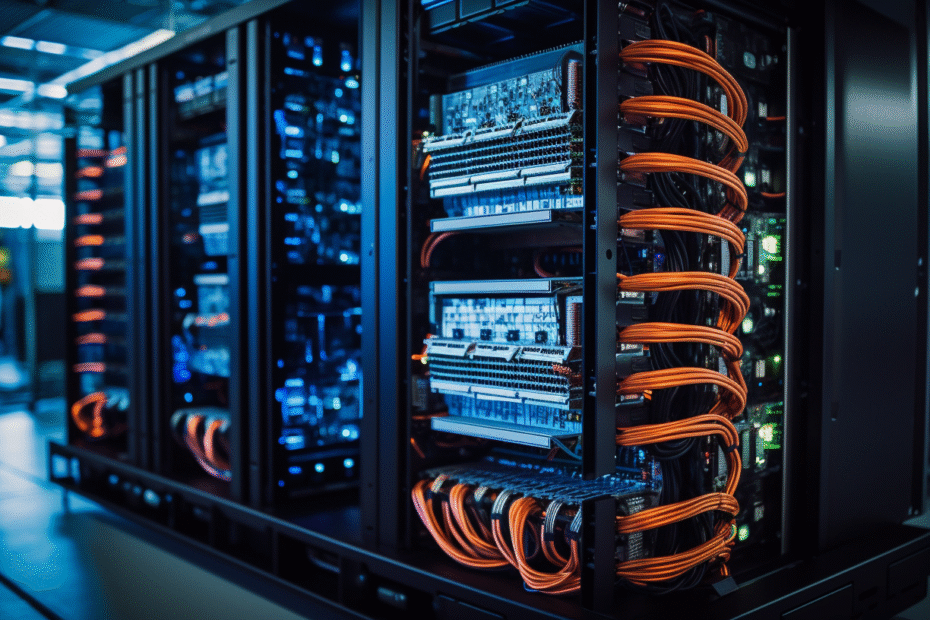Tesla has officially pulled the plug on Dojo, its highly ambitious AI supercomputer project once described by Elon Musk as a game-changer for the company’s self-driving and robotics efforts. After nearly six years of development and hype, Dojo was disbanded in August 2025, marking the end of a chapter that many believed could redefine Tesla not just as an automaker, but as a true AI powerhouse.
The news comes as a surprise to some, especially since Musk only last year told investors that Tesla would “double down” on Dojo in the run-up to the robotaxi launch. Yet within weeks of suggesting that Dojo 2, Tesla’s next-generation cluster built on its in-house D2 chips, would scale in 2026, Musk abruptly declared the project an “evolutionary dead end.”
What Dojo Was Meant to Be
At its core, Dojo was Tesla’s custom-built supercomputer designed to train the company’s Full Self-Driving (FSD) neural networks. Unlike most rivals in the autonomous vehicle industry who rely on lidar, radar, and detailed maps, Tesla has long insisted it could achieve autonomy with cameras alone. That bold bet required enormous computing power to process millions of hours of real-world driving footage. Dojo was supposed to be the engine that made that vision possible.
The project carried enormous expectations. Tesla even unveiled its proprietary D1 chip back in 2021, which was specifically designed for AI workloads and touted as a rival to Nvidia’s hardware. The company teased even more ambitious designs with the D2 chip, which aimed to integrate entire supercomputer tiles onto a single wafer of silicon. Analysts predicted that if Dojo succeeded, it could one day be rented out like Amazon’s AWS cloud services, opening a whole new business model for Tesla.

Why Tesla Shut It Down
The decision to shut down Dojo followed a series of turning points. Tesla had increasingly shifted focus to Cortex, another massive AI training cluster powered by Nvidia GPUs, which Musk began highlighting in 2024. By early 2025, Cortex had scaled to tens of thousands of GPUs and was already contributing to new versions of FSD. Meanwhile, Dojo updates all but disappeared from Tesla’s earnings calls and shareholder reports.
Adding to the uncertainty, Tesla struck a $16.5 billion deal with Samsung to supply next-generation AI6 chips earlier this summer. These chips are designed to scale across Tesla’s product line, from FSD to its humanoid robot Optimus to large-scale data center training. Musk later admitted that once it became clear all efforts converged on AI6, Dojo had no future.
The shutdown also coincided with the departure of Dojo lead Peter Bannon and around 20 engineers, who left to start their own AI chip venture called DensityAI. With key talent gone and Tesla’s strategic direction shifting toward partnerships, the writing was on the wall.
The Legacy of Dojo
For some, Dojo’s end feels like another instance of Musk over-promising and under-delivering, especially at a time when Tesla faces slowing EV sales and a cautious rollout of its robotaxi service. Others see it as a smart pivot — moving away from the high-risk gamble of building a proprietary supercomputer to focusing on partnerships with proven chipmakers like Nvidia, AMD, and Samsung.
In many ways, Dojo’s story reflects Tesla’s broader identity struggle. Musk has always pushed the idea that Tesla is not just a car company, but an AI company. Dojo was supposed to prove that point. And for a time, it captured investor imagination. A 2023 Morgan Stanley report even suggested Dojo could add half a trillion dollars to Tesla’s market value by unlocking new AI-driven revenue streams.
But the practical challenges were immense. Training AI models on custom silicon meant rewriting software, retraining engineers, and competing with Nvidia’s near-total dominance of the AI hardware market. In the end, Tesla’s gamble on going it alone didn’t pay off.
What This Means for Tesla’s Future
Tesla hasn’t abandoned its supercomputing ambitions entirely. The company still plans to invest $500 million in a training cluster in Buffalo, New York — but it will no longer be Dojo. Instead, those efforts are expected to expand Cortex and incorporate the upcoming AI6 chip platform.
Looking forward, Tesla’s focus seems to be on scaling FSD, improving Optimus, and securing reliable chip supply chains rather than reinventing the wheel. Musk himself hinted that Dojo’s spirit “lives on” in AI6, which may power Tesla’s AI future in a more sustainable and scalable way.
A Look Back at Dojo’s Journey

- 2019–2020: Musk first teased the idea of Dojo as a supercomputer for AI training.
- 2021: Tesla unveiled its custom D1 chip at AI Day, sparking huge buzz in the tech world.
- 2023: Production of D1 chips began; Musk promised Dojo would soon rank among the world’s most powerful supercomputers.
- 2024: Tesla shifted attention to Cortex during earnings calls, while still pledging $500 million to build a Dojo cluster in Buffalo.
- 2025: Cortex scaled rapidly using Nvidia hardware; Tesla signed a major chip deal with Samsung. By August, Musk declared Dojo “a dead end,” and the project was officially disbanded.
Closing Thoughts
Dojo’s shutdown is the end of a bold experiment, but not the end of Tesla’s AI story. In fact, it highlights a recurring theme in Musk’s playbook: try ambitious projects, pivot when necessary, and move fast toward the next big idea. While Dojo may not have lived up to its hype, it paved the way for Tesla’s ongoing AI journey — one now centered on partnerships, next-gen chips, and the relentless pursuit of autonomous driving.
